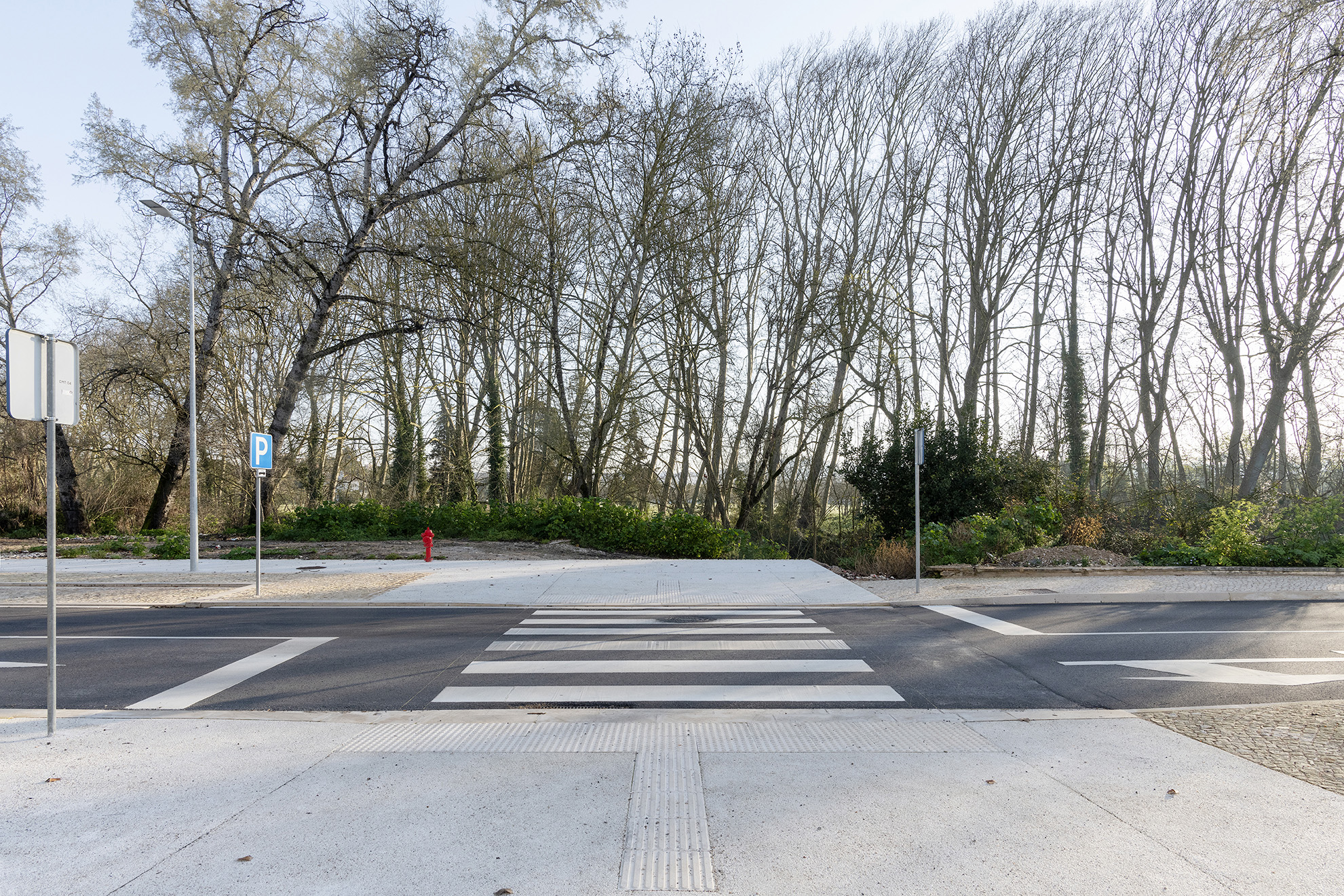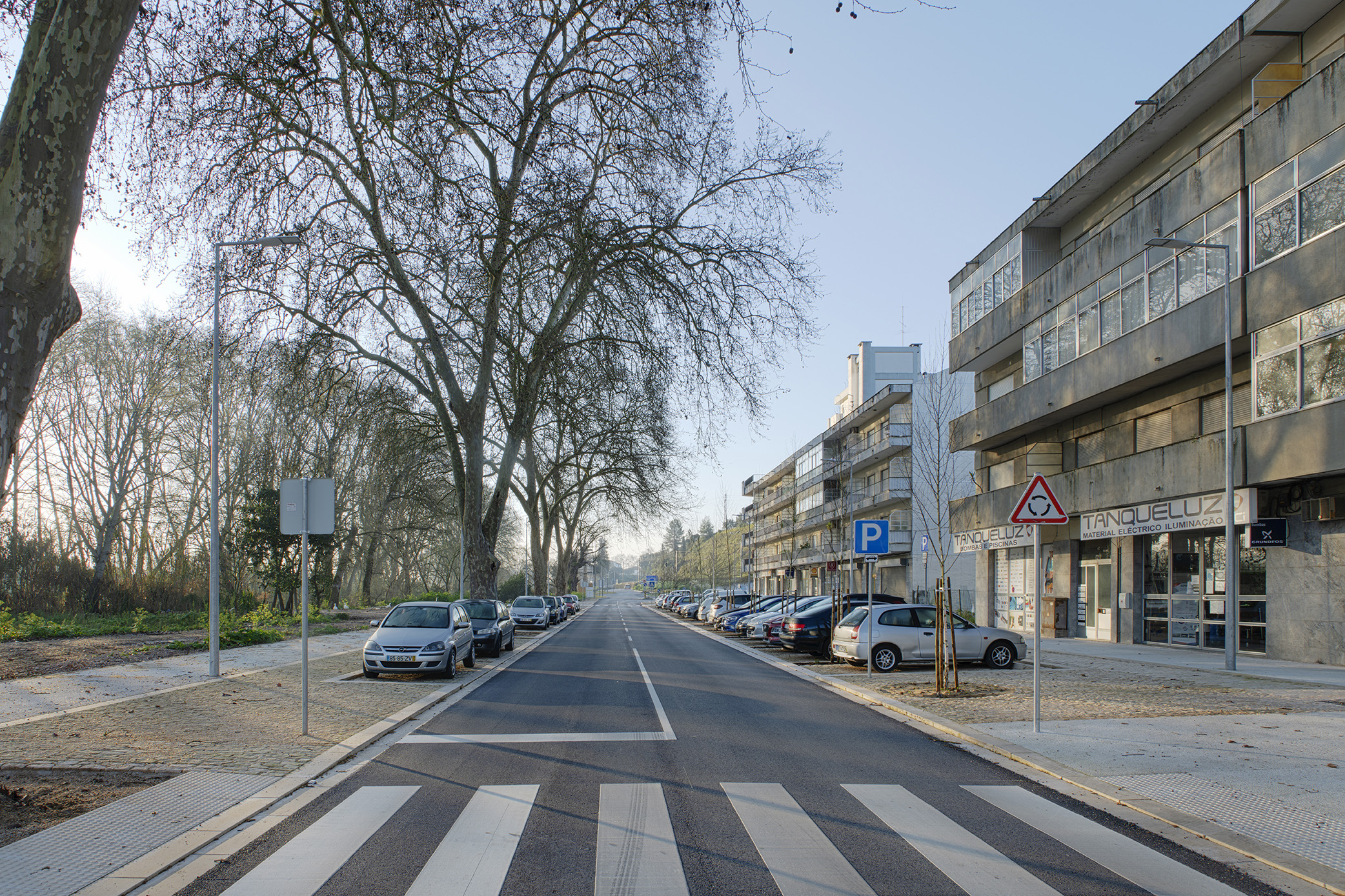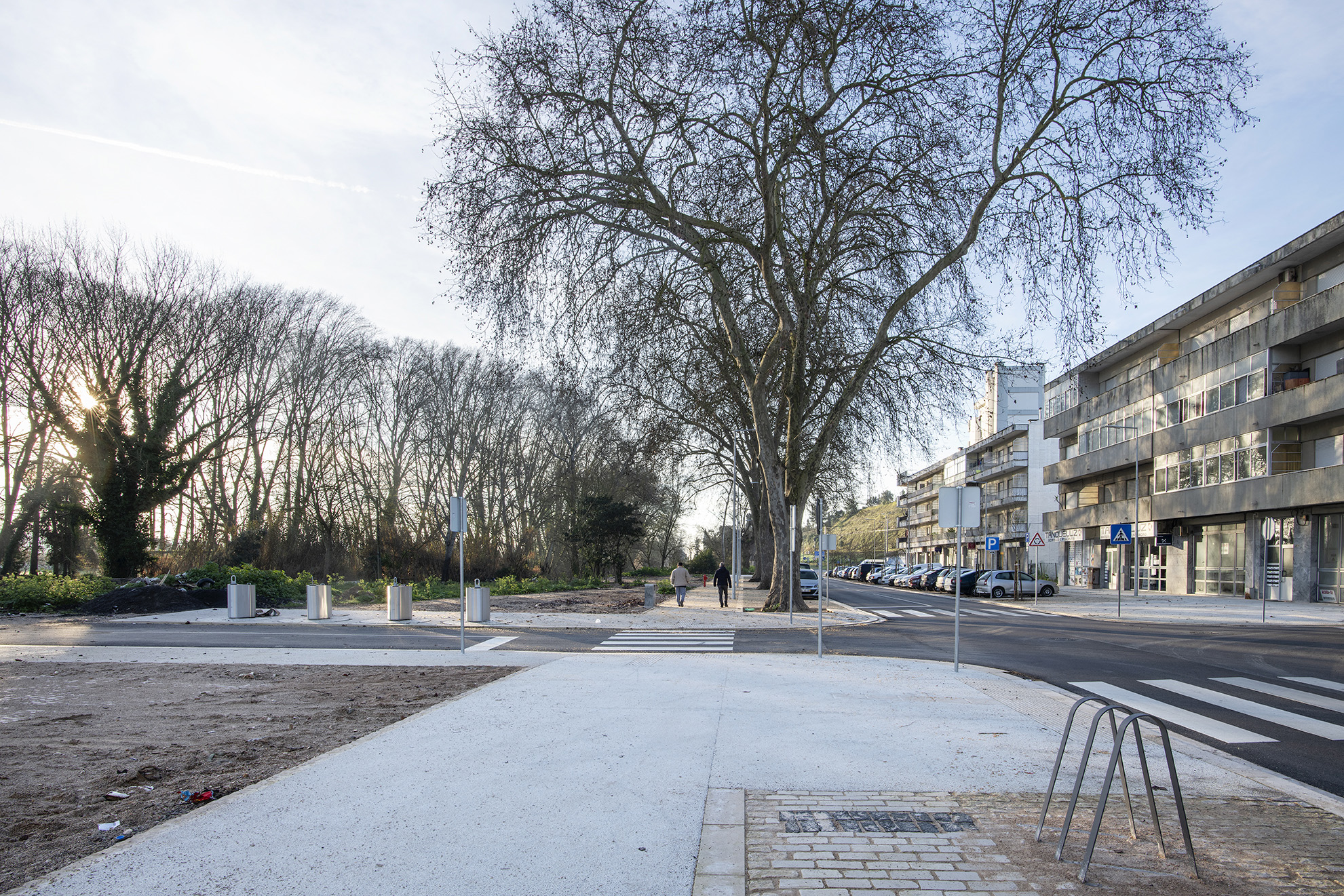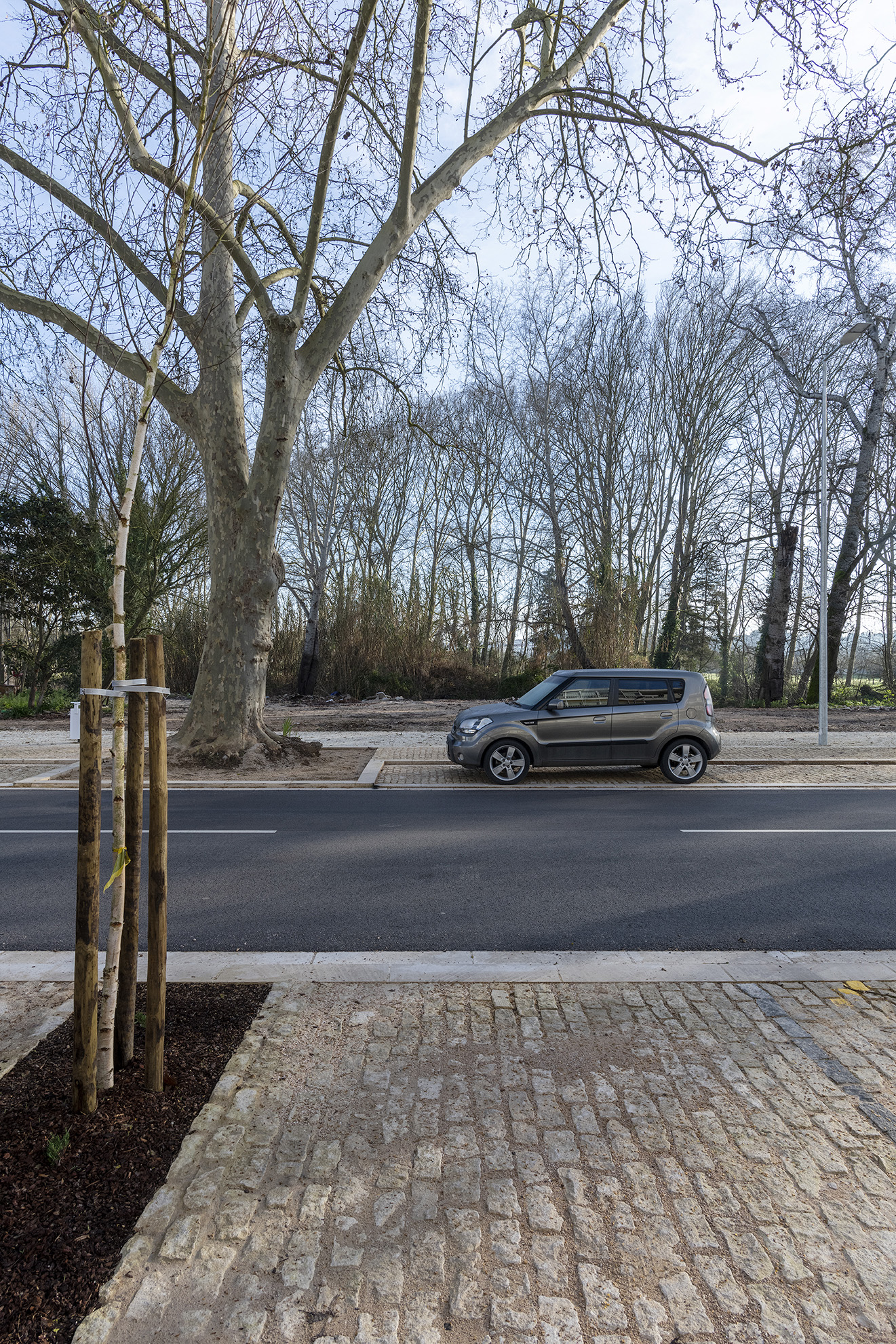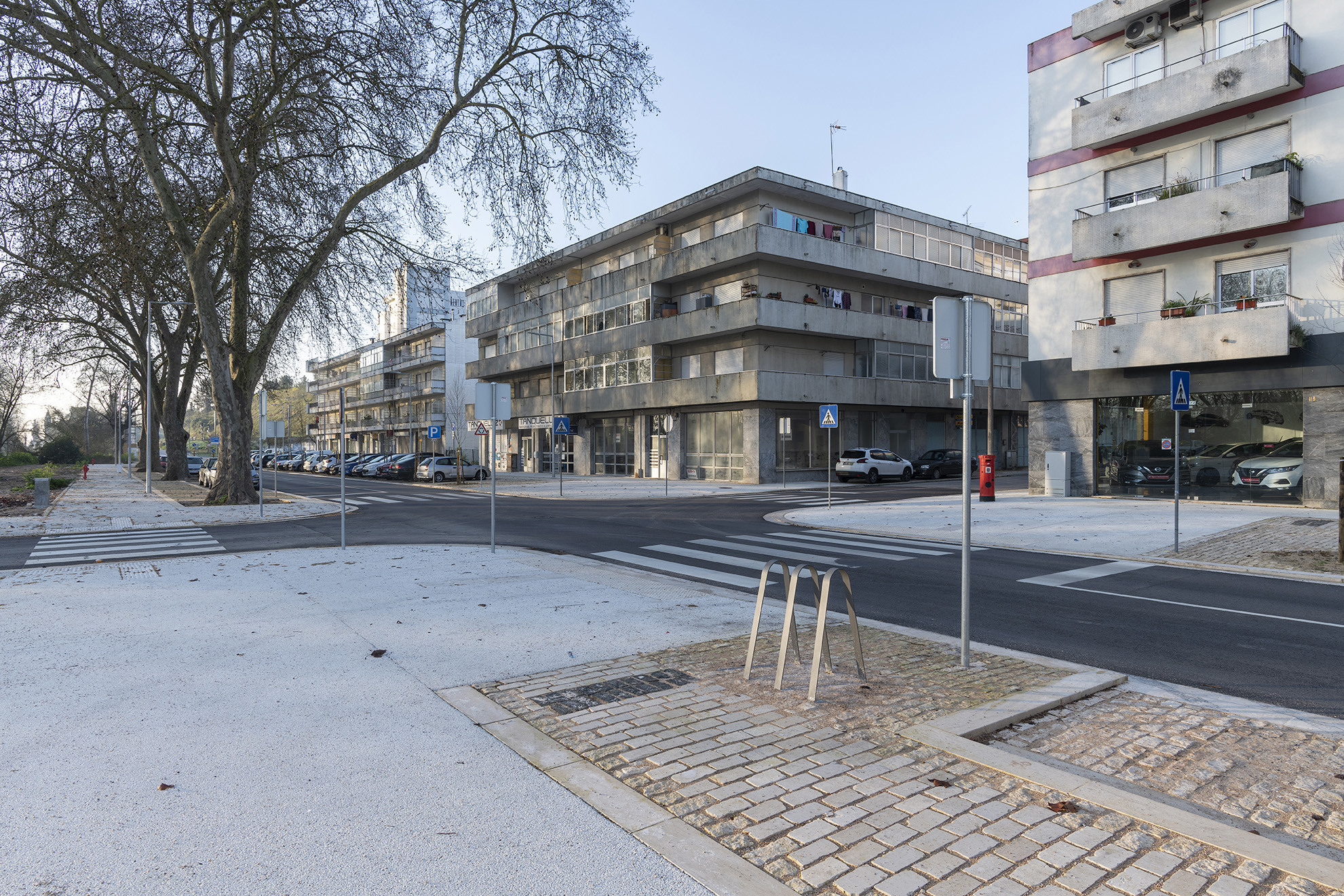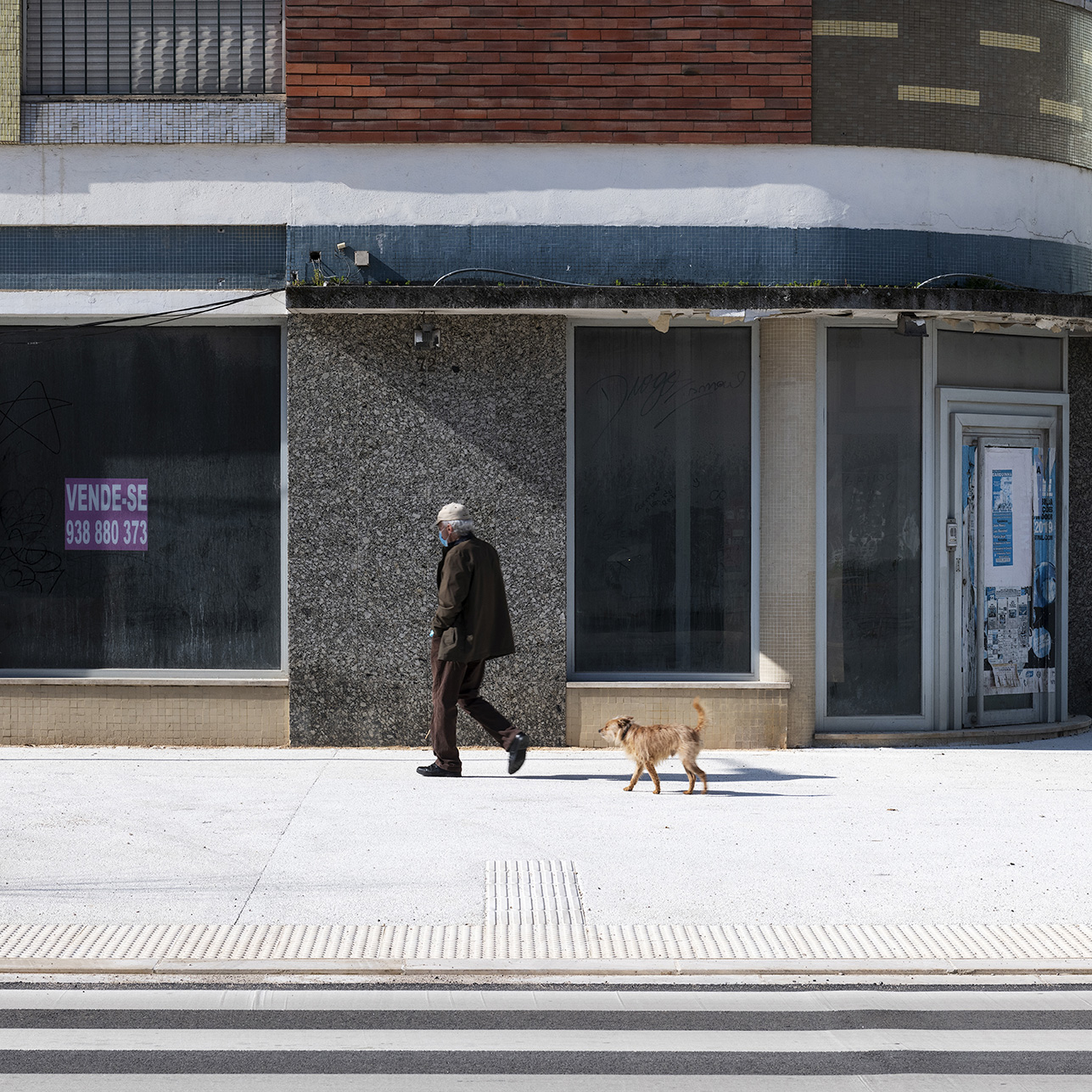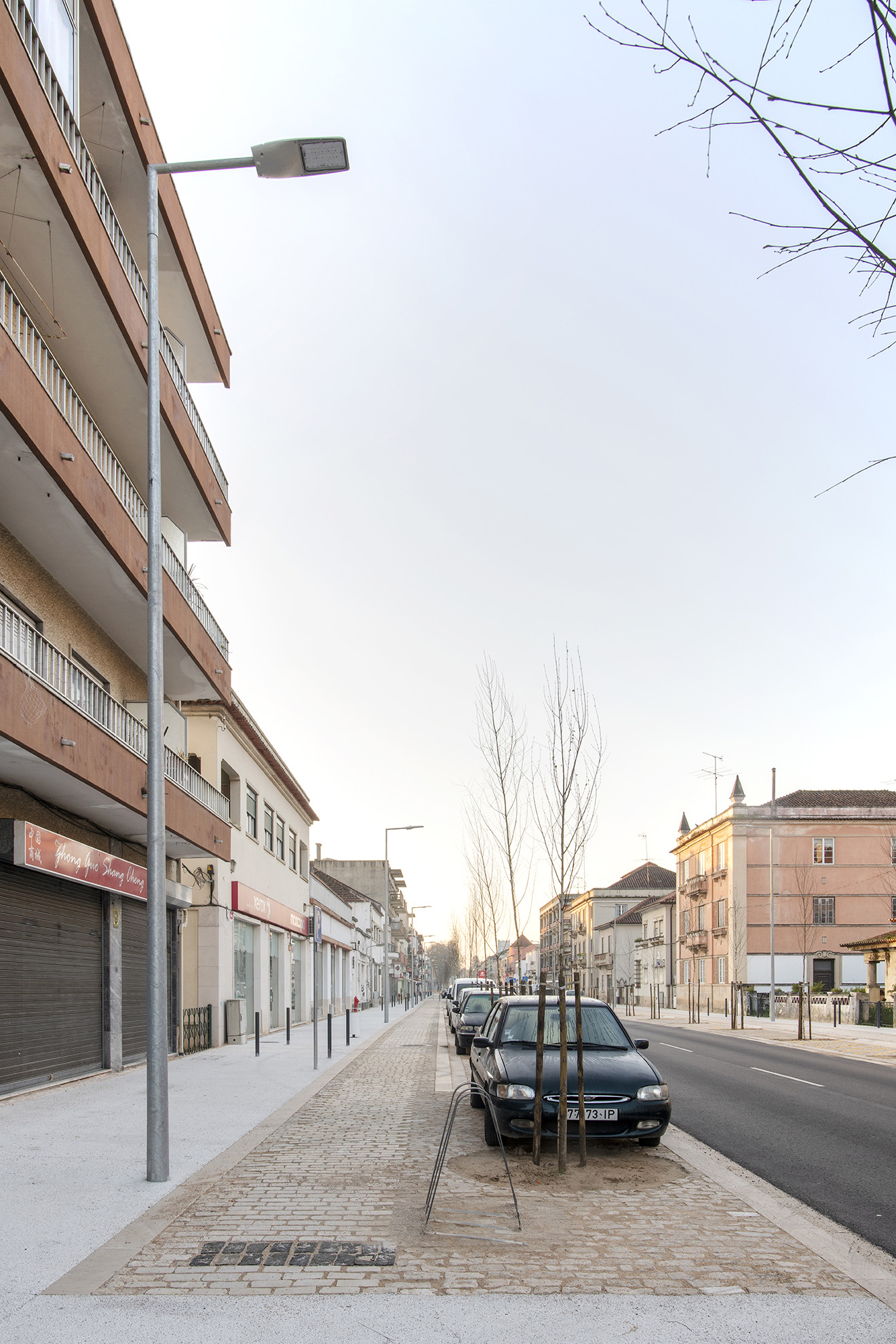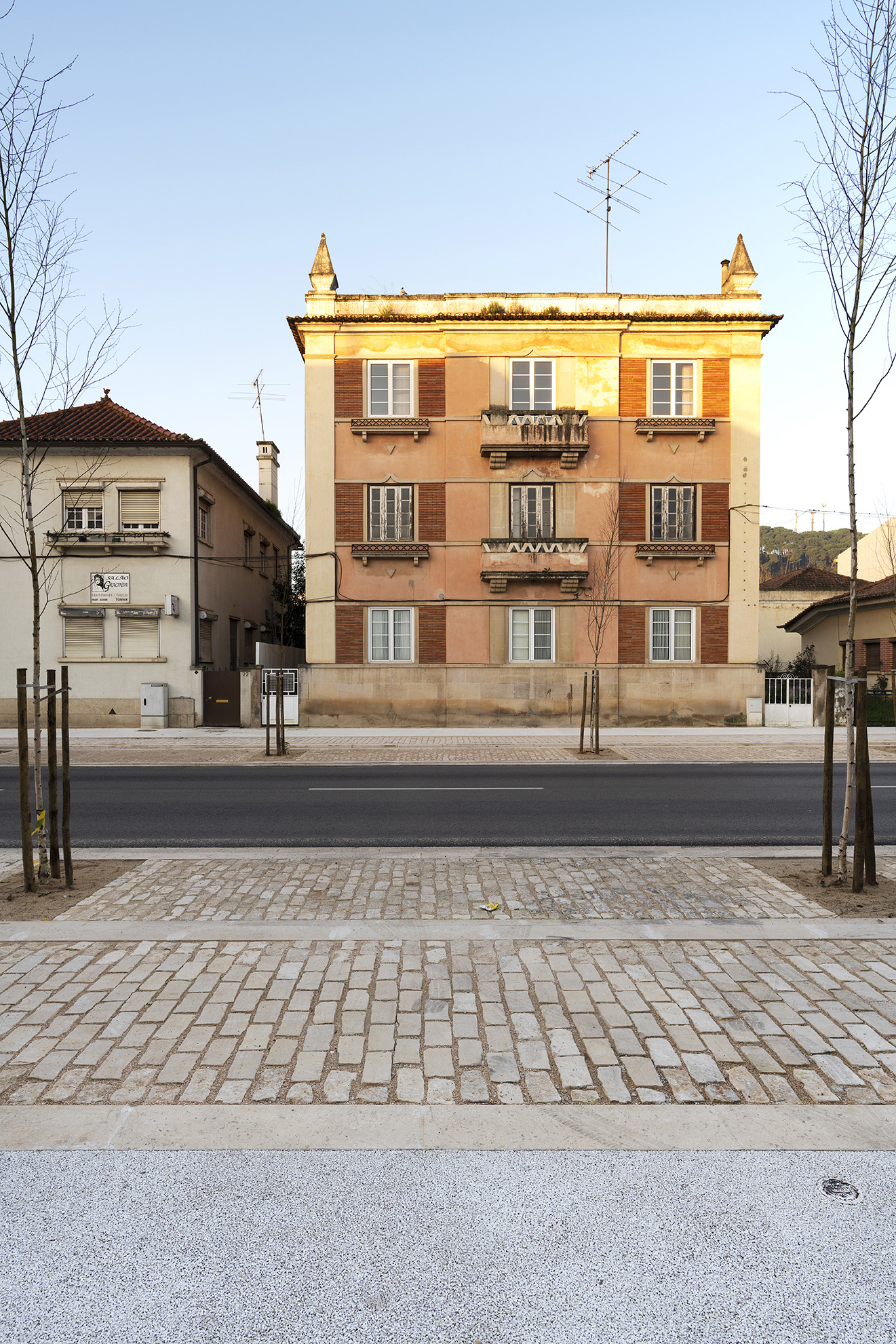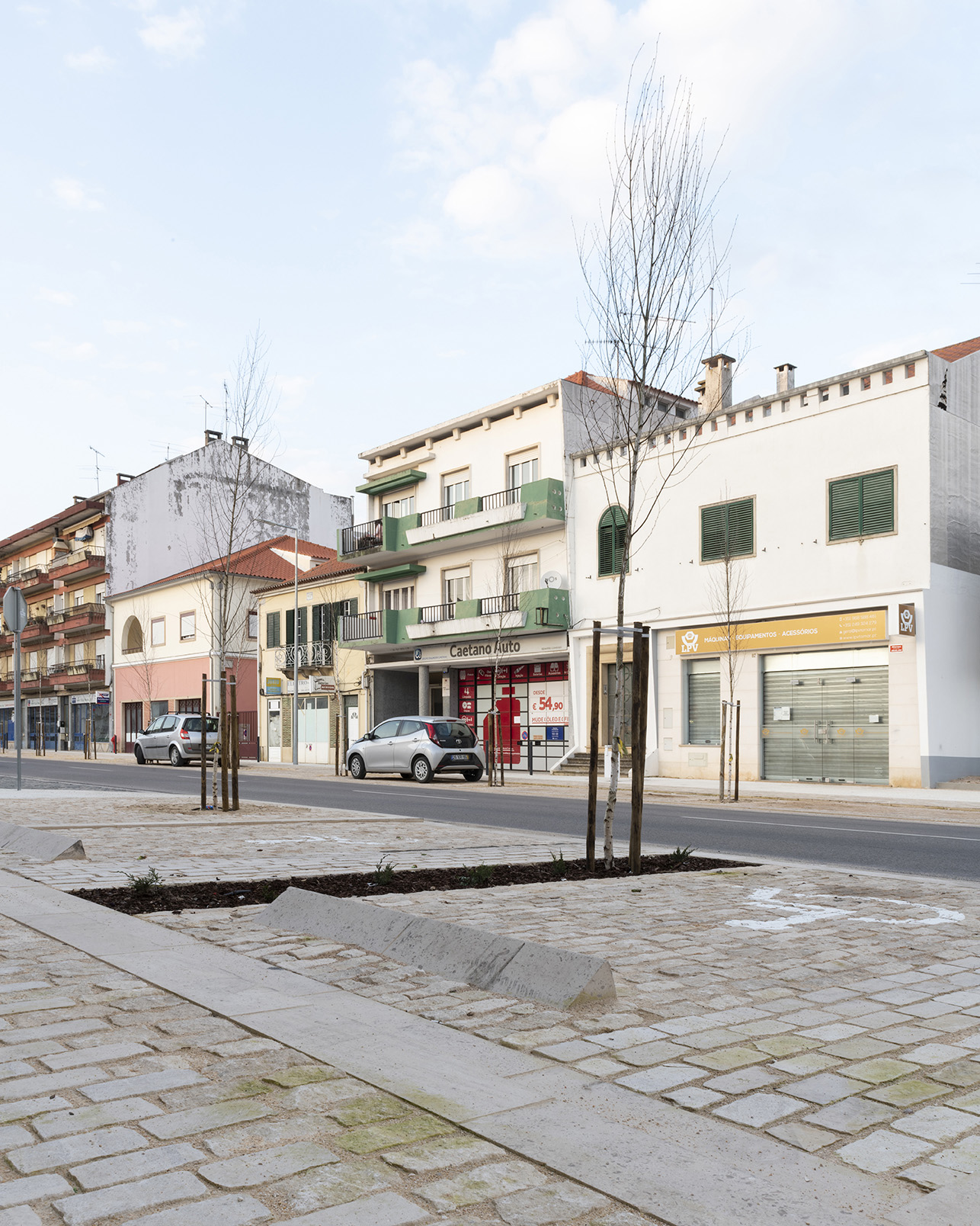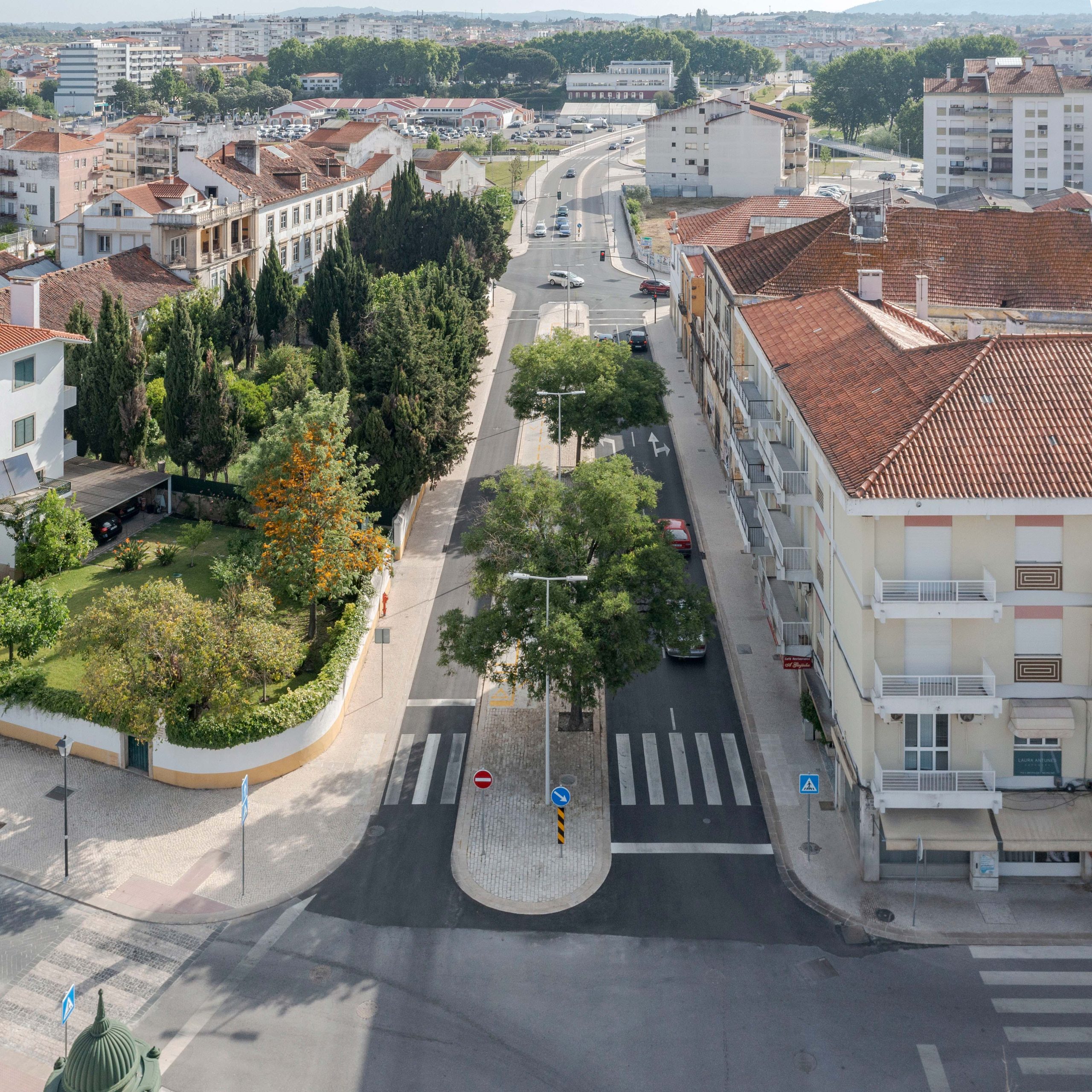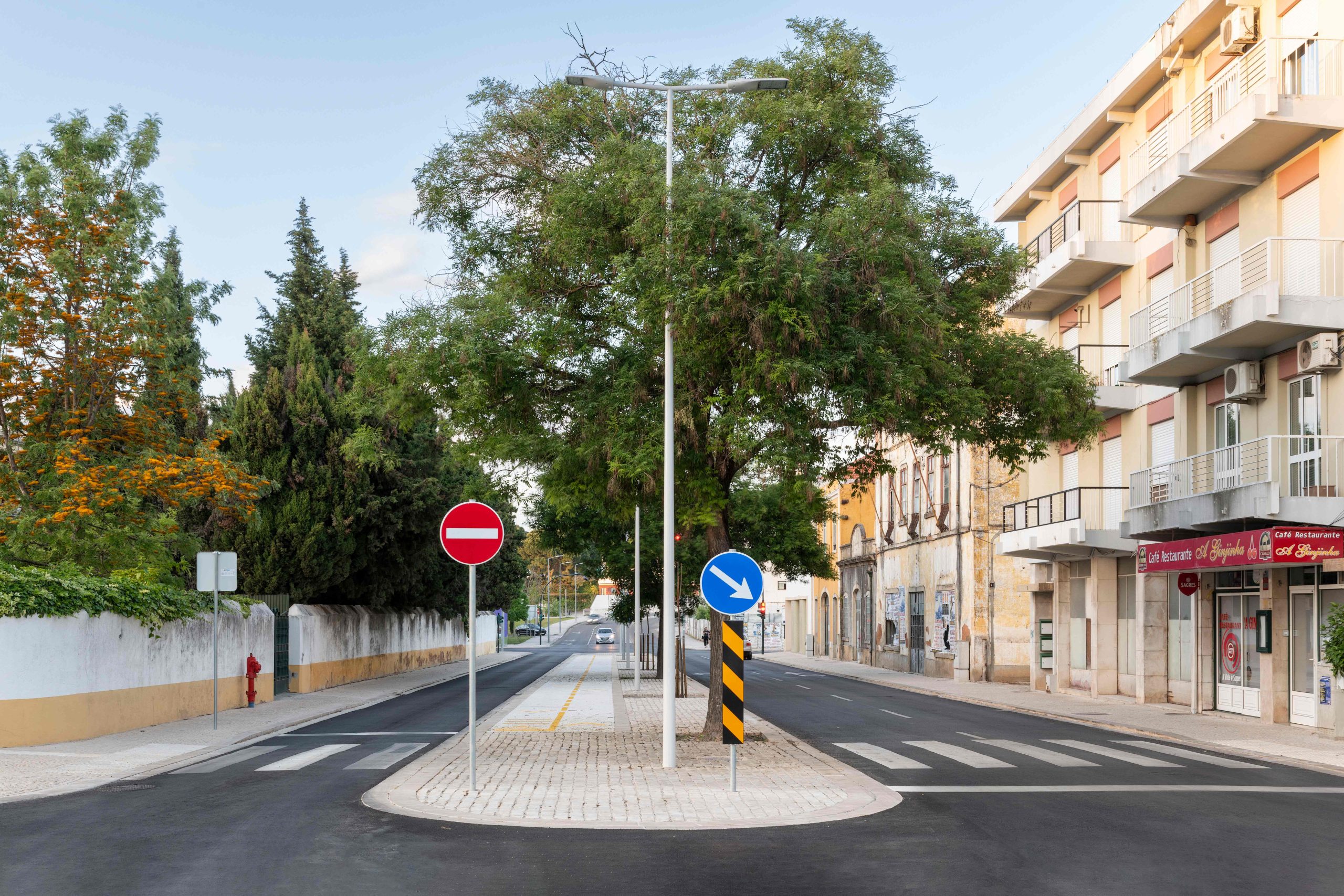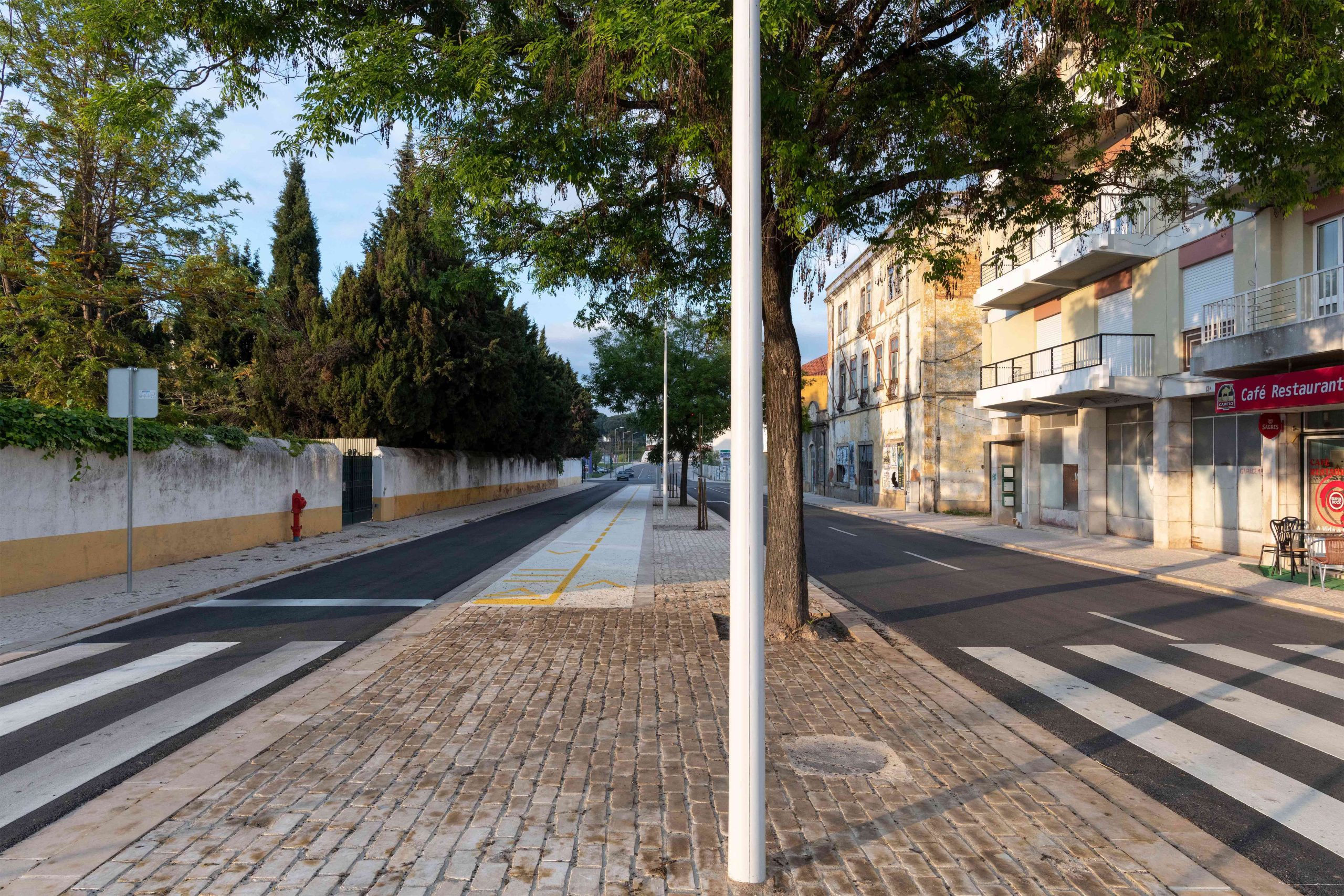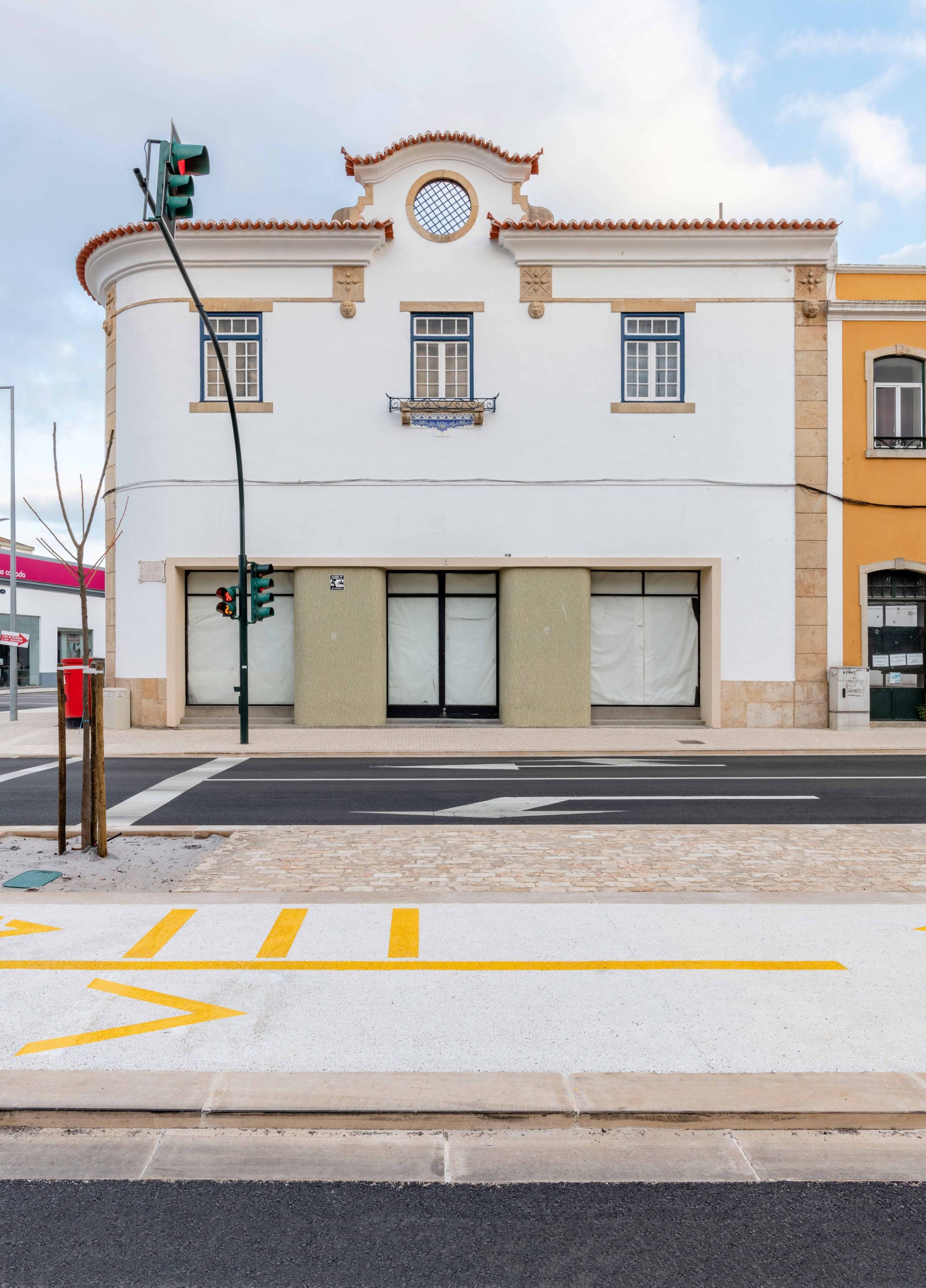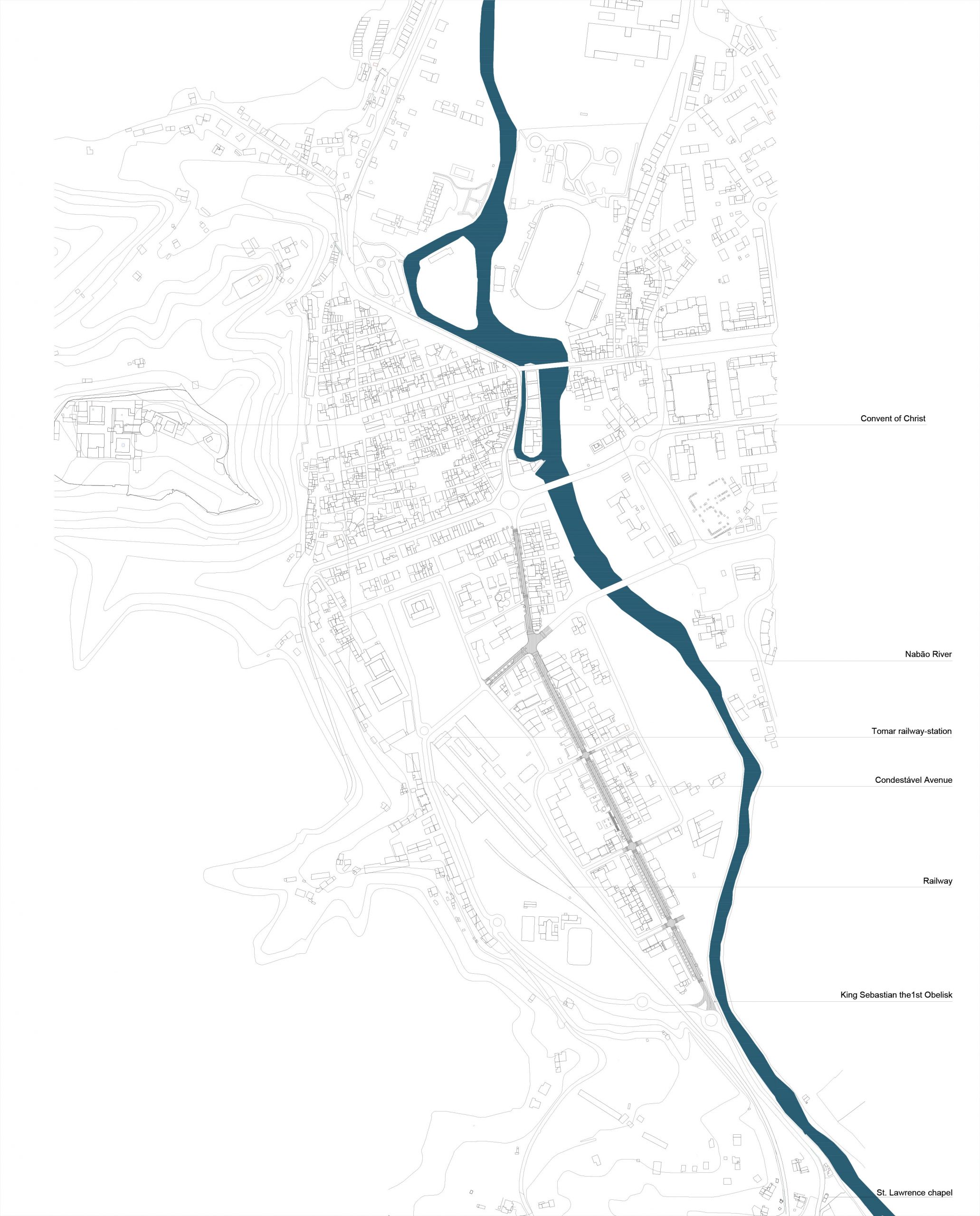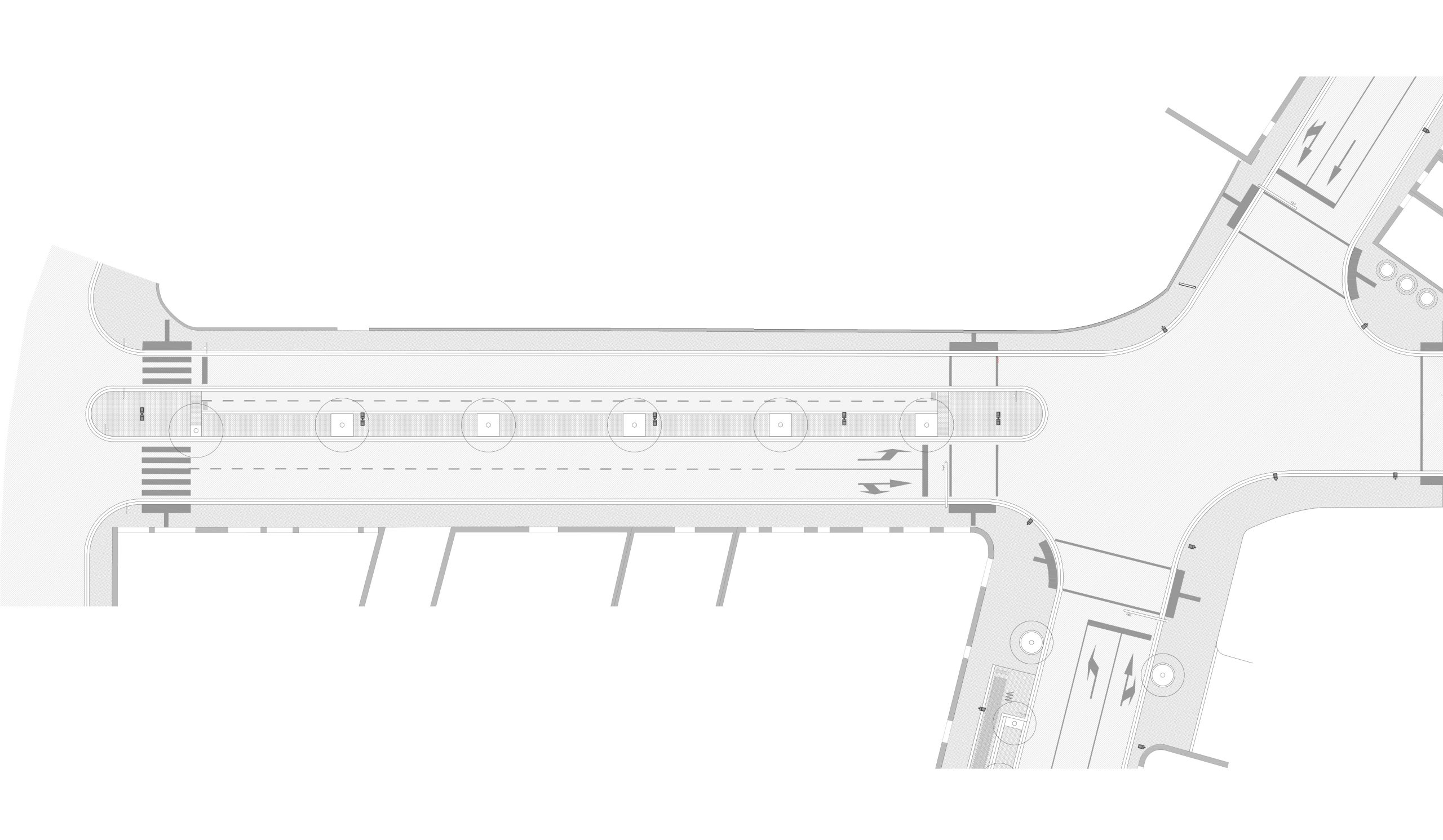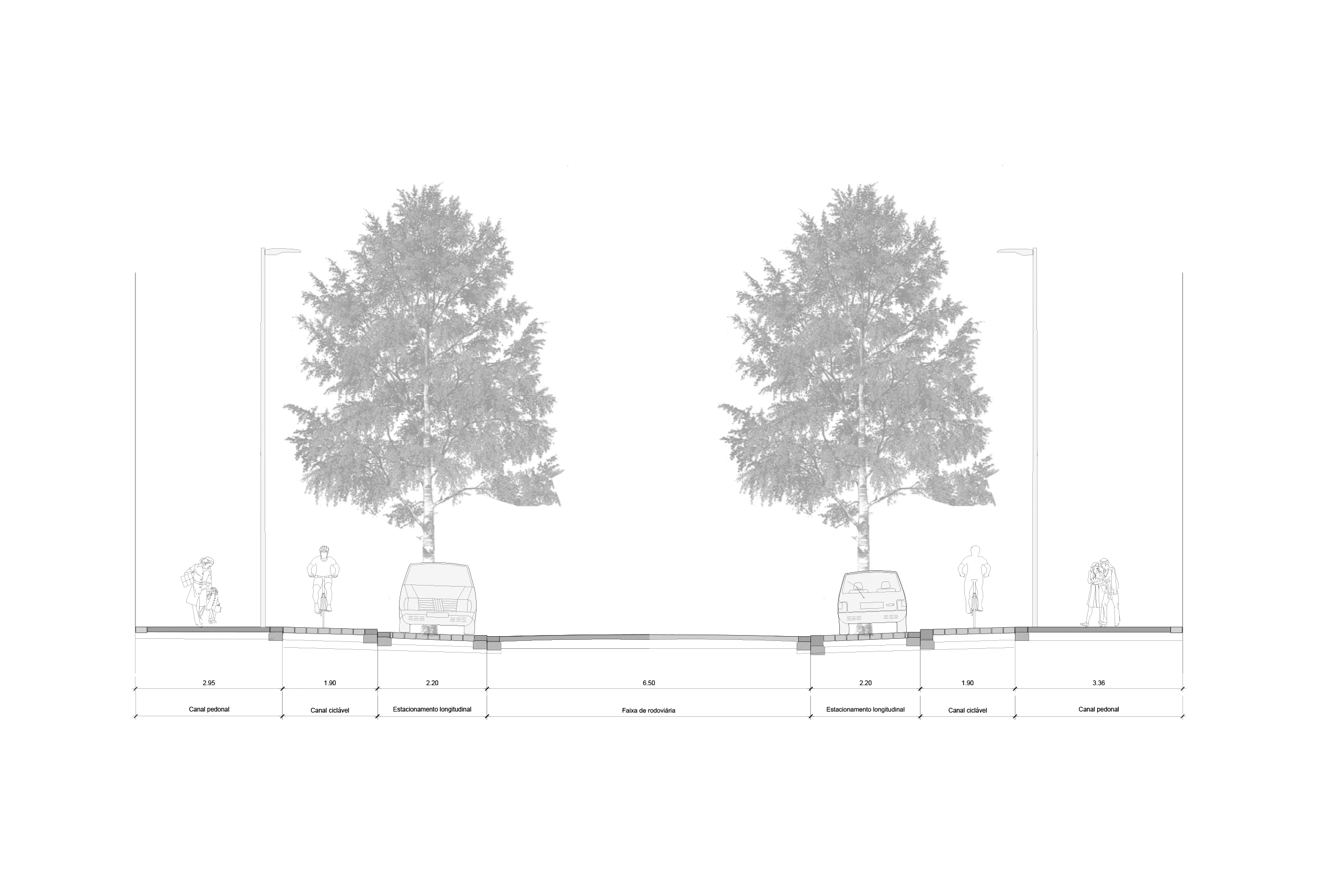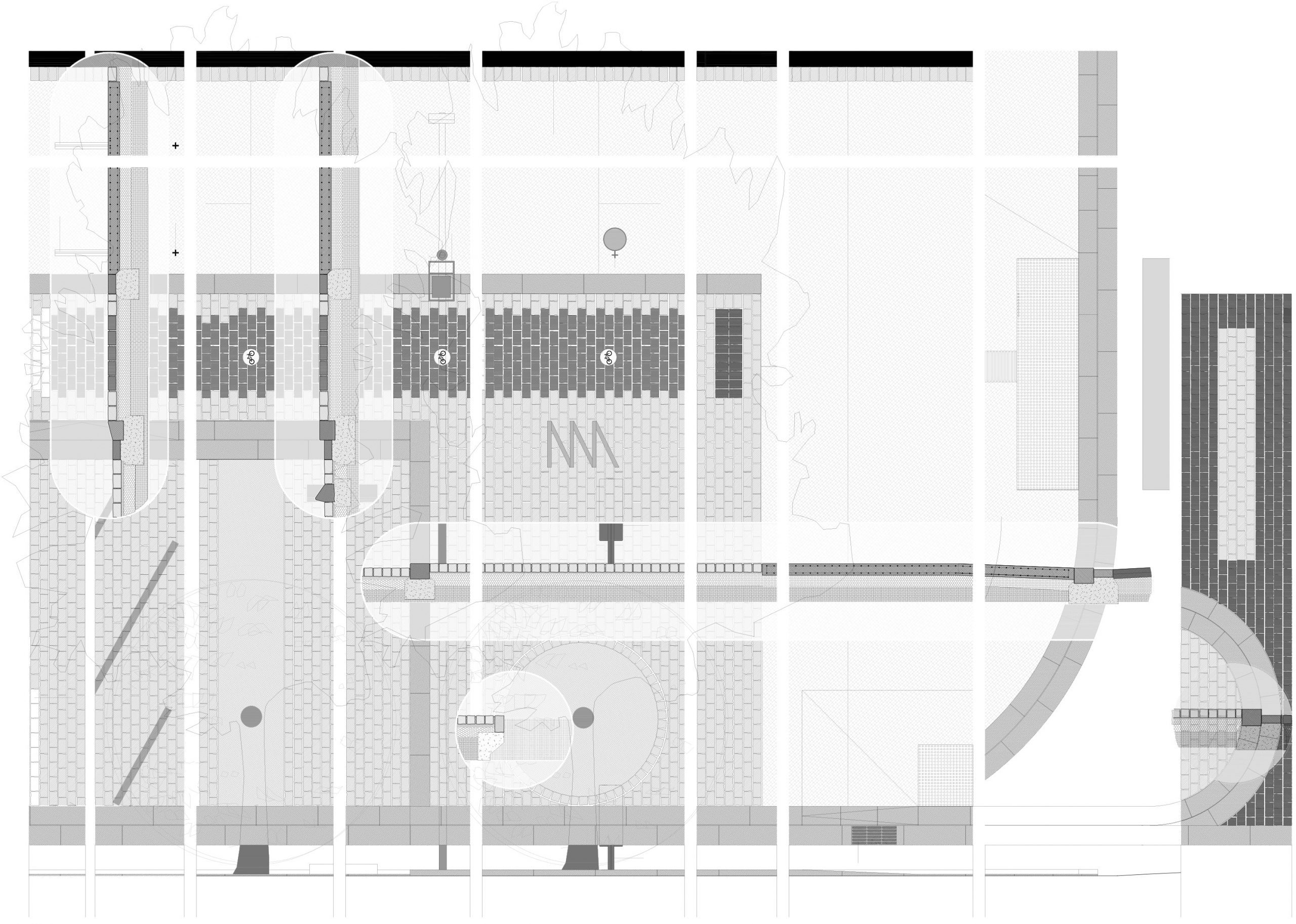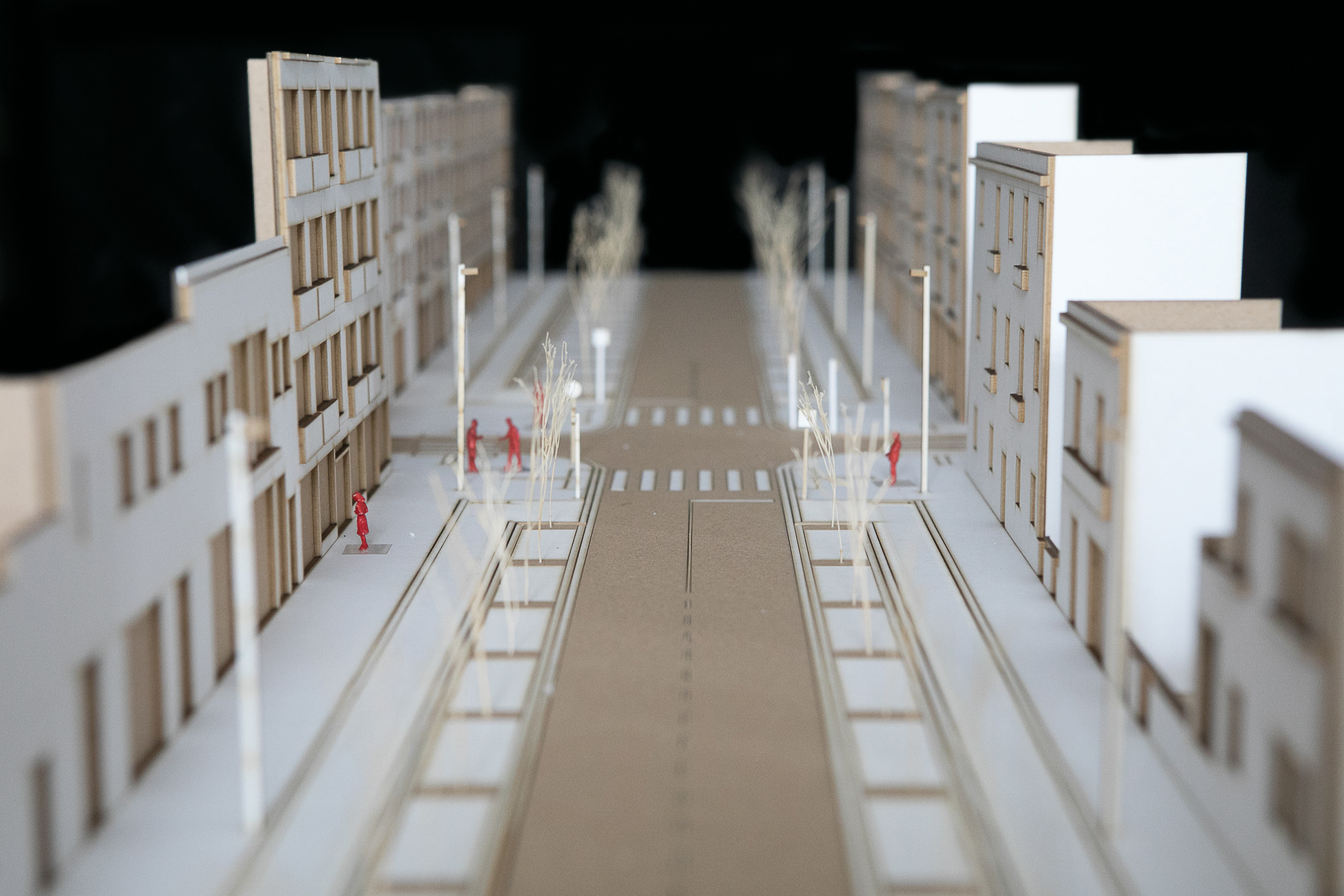|
NUNO TEOTÓNIO PEREIRA AWARD 2022
Condestável Avenue is the main axis to access the city of Tomar. With about 830 meters long, the boulevard is oriented in Southeast/Northwest direction, and is located in the right Nabão riverbank. Dense vegetation and big platanus trees feature the atmosphere of the river surroundings. The area is also marked by the presence of the Manueline Saint Lawrence chapel and the obelisk deployed by the King Sebastian the 1st in the 16th Century.
From the river valley it is possible so see the Convent of Christ on the top of the hill integrating the Sete Montes wood (known as the Bush of the Convent). The monastic structure was founded by the Order of Solomon’s Temple, the Knights Templar, in the 12th Century, being the main reference of the city and listed as UNESCO World Heritage. The convent is a palimpsest, such as the city itself, that upon the 15th century have grown beyond the convent’s fence.
Industrial areas were settled in the proximity of the river since the 19th century, using it as an infrastructure to produce energy and mobility. In the 20th century, the railway and roads boosted the city development and its urban perimeter. The industrial vocation of the area was increased by the concentration of a huge number of companies related with the automobile sector. Some art-deco structures from the 1930s reflect the modernity of the area, which would be emphasized on the decades on, by anonymous residential buildings.
The recognition of the Nabão value as a natural ecosystem associated to relevant heritage, was the conceptual base for the new urban regulation produced by the municipality in early millennium, to preserve the area and open it to the people fruition. Condestável Avenue public space renovation was considered as a fundamental action for the municipal strategy of reconverting this urban area.
The intervention on the Avenue foresaw environment improvement, by reducing the CO2 emissions. In this sense the road corridor profile was reduced, pedestrian paths were enlarging, and a cycling strip was also introduced. Two alignments of birch tree were planted, ruling the parking areas, and creating a new urban scenario which reinforce the straight geometry of the boulevard. Material pattern was based on limestone parallels, recovering the ancient Portuguese technique for urban sidewalks.
The simplicity of the intervention aims at suggesting an urban continuity, creating a stage for urban development and to everyday use of people.
|
Promotor Municipality of Tomar
Architecture Paulo Tormenta Pinto
Collaboration Rosa Maria Bastos, João Maria Costa
Hydraulic Miguel Villar, Andreia Cardoso and Rita Duarte
Electricity Rúben Sobral
Landscape Mónica Farina
Roads Pedro Reis/Engimind
Project/Construction 2017 / 2021
Construction Carlos Gil – Obras Públicas, Lda
Construction Supervision Elsa Pimenta, José Almeida and Rui Reis
Location Tomar
Photography José Almeida and Nuno Almendra (model) |


